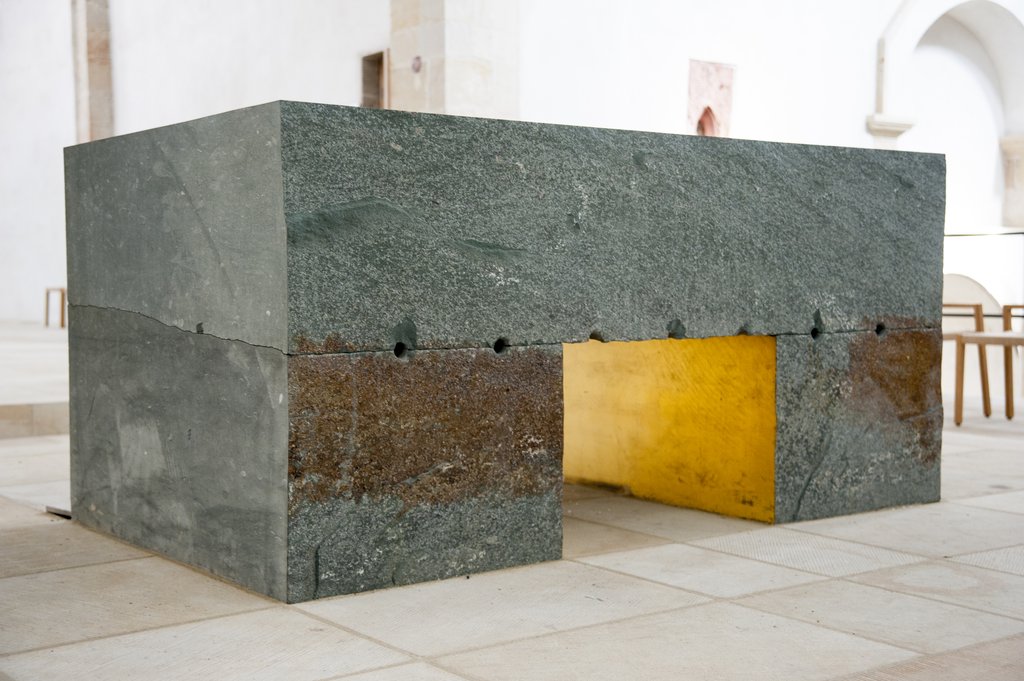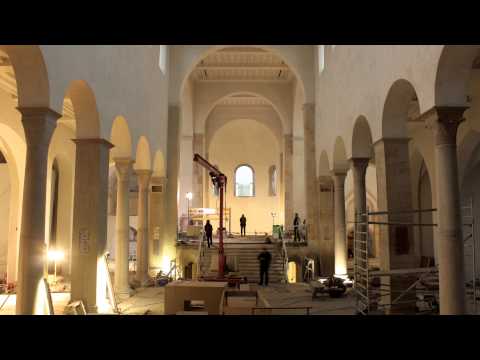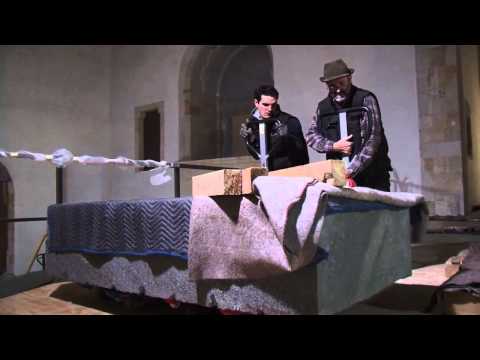New altar made of 120 million-year-old stone
The modern main altar for the restored Hildesheim Cathedral was created by the globally renowned sculptor Ulrich Rückriem. The artist created the altar from a single block of dolomite from the Anröchte region.
Klick the image to get more information about the communion table.
The altar in Hildesheim Cathedral.
The stone used to make the new communion table in Hildesheim Cathedral is 120 million years old. It comes from a quarry between Anröchte and Soest and was formed from shells and sand when the sea ebbed away there millions of years ago and a rocky landscape emerged over time. The Anröchte dolomite is unique in the world due to its consistency. Rückriem, who lives in London and Cologne, has been using the material from this quarry for several decades for his often monumental works.
The Hildesheim Altar shimmers in soft green – the colour of the oldest layers of limestone. The altar is 90 centimetres tall, the surface is 1.90 metres (width) by 1.10 metres (depth). It is composed of three parts which were cut from the large block and then joined together later – Rückriem’s typical way of working. The cover plate alone weighs 2.5 tons.
The centrepiece of worship
The main altar is the centrepiece of worship. Here, according to the Catholic faith, bread (communion wafer) and wine become the body and blood of Christ. With this transformative act, the congregation is reminded of the Last Supper that Jesus Christ spent with his disciples before His crucifixion. At the supper He told them to continue to celebrate this meal in His memory, in order to maintain and strengthen the bond between Him and them – and between Him and humanity. According to belief, Christ becomes present in the host and wine.
Ulrich Rückriem gilded the interior of the altar base – his homage to the earlier tradition of placing a relic shrine below the altar plate. The Hildesheim Altar by Rückriem was created in seven sections – two horizontal and five vertical – and a horizontal split in the middle. The stone is left natural. This allows the sculptor to maintain the original character of the ancient stone as well as allowing him to make his own imprint.
For Rückriem, there is an unbreakable bond between the sculpture he has created and the place where it stands: “First of all, the place gives the sculpture meaning, and makes a stone table that could be anywhere an altar that is unalterable and where holiness takes place.“
Contemporary art supports medieval treasures
Vicar General and Prelate Dr. Werner Schreer says of the new altar: “We decided on Ulrich Rückriem specifically. The contemporary holy art is intended to add to the medieval treasures such as the Bernward Doors, the Bernward Column or the Hezilo chandelier. Art is also an expression of religion. And as it is much simpler and smaller today than it was before, the altar fits excellently in the re-designed Cathedral.”
As part of the restoration, the altar was moved closer to the congregation. It is now just above the Godehard shrine, in the crypt below the chancel. Ruckreim‘s gold-plating is also reminiscent of the interior of the predella.
The altar was sponsored by the Munich association “Ausstellungshaus für christliche Kunst e.V.“ with a donation of 30 000 euro.





